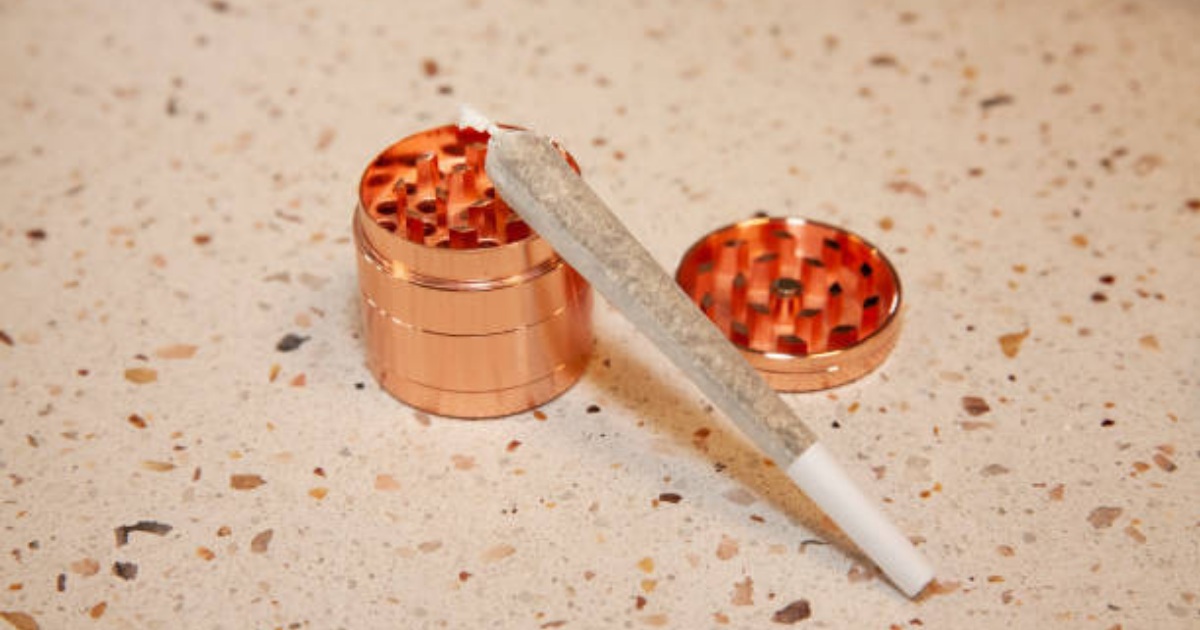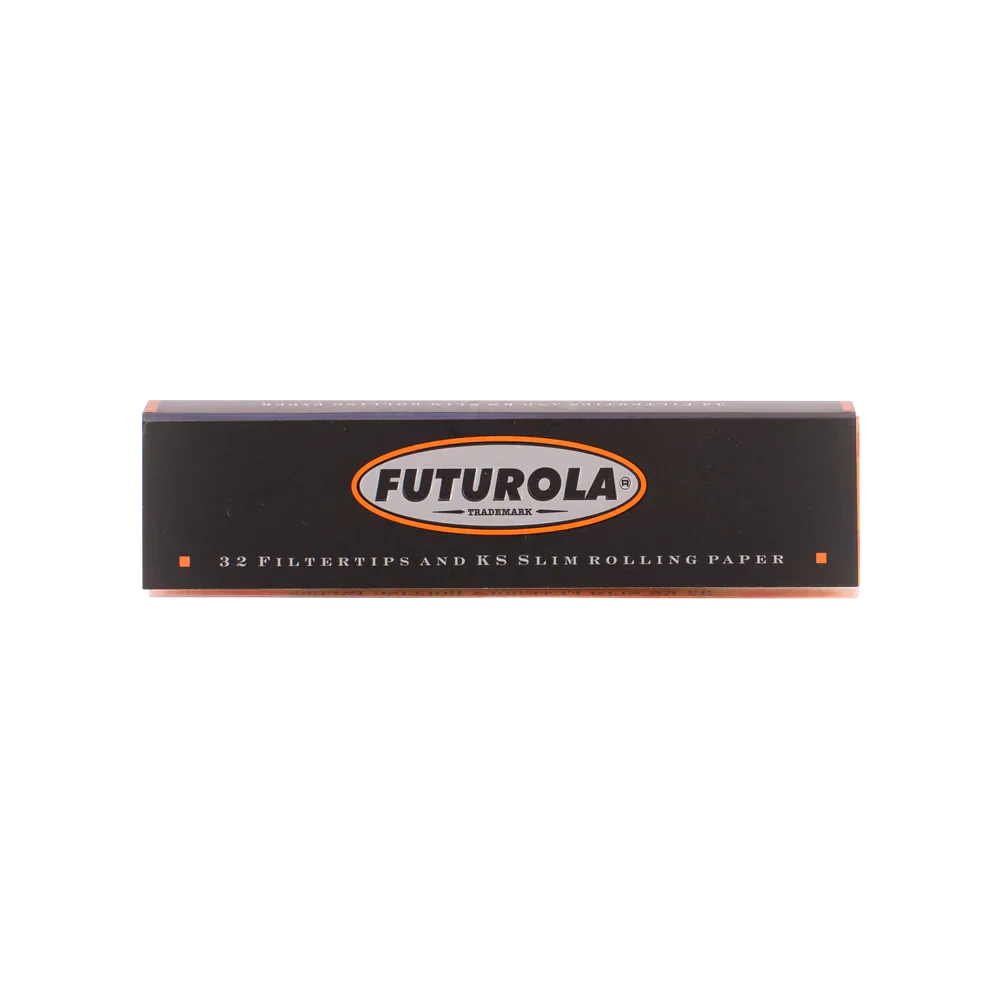Rolling a joint isn’t just about the paper and what goes inside. The real magic comes from having the right gear. Whether it’s about getting a cleaner roll, faster pack, or tighter twist, rolling accessories are the unsung heroes that make the whole process smoother, cleaner, and way less stressful.
This isn’t about overcomplicating things. It’s about leveling up what already works and making the whole joint-rolling routine hit harder, literally and figuratively.
Why Rolling Accessories Matter
Rolling isn't just a habit, it's a process. Rolling accessories don’t complicate that process, they clean it up. Whether you’re prepping for a solo session or filling for a crowd, good tools make the outcome more reliable and less frustrating. They take out the guesswork and leave you with smoother burns, tighter rolls, and a lot less mess.
The more you roll, the more the little things start to matter. Uneven burns, clogged airflow, wasted product, it all adds up. Rolling accessories step in before those problems start. They’re not there to replace skill. They sharpen it.
Tools Keep Rolling Consistent, Even When You're Not
You might roll great one day and sloppy the next. Accessories close that gap. They make sure every cone comes out with the same shape, density, and airflow, no matter who’s behind the prep. It’s not about skill, it’s about repeatability.
That matters more when you're rolling a bunch. When time is tight or the session is shared, you don’t want to explain why this one hits different from the last. Using a roller, loader, or tamping tool makes the whole process less random and more controlled.
It also cuts down on waste. Messy grinds spill. Overpacked tips get tossed. If your gear helps lock things in early, you end up saving product and saving yourself the trouble of redoing it.
Accessories Make Scaling Easier Without Sacrificing Quality
Hand-rolling every cone takes time, unlike when you use premium pre-rolled cones. Tools speed things up without making them sloppy. That’s huge when you’re rolling for more than just yourself. Loaders, grinders, and trays turn a slow job into something clean and repeatable.
The more you try to scale without tools, the more the quality slips. One cone ends up loose, another one burns too fast. Accessories give you control over the final result, even when you're doing 10 or 20 in a row.
This is where pros separate from casuals. Whether you’re selling, sharing, or just stocking up, keeping every cone tight and clean means you need more than just fingers and hope. Accessories are what hold the line.
Less Stress, Less Mess, Better Burn
Rolling should be fun. But it turns into a headache when things fall apart mid-way. Paper tears, grind spills, cones clog. Accessories make everything smoother from start to finish. Less stress during prep, fewer problems during the burn.
When you use the right tray, you don’t lose half your grind. When you use a proper scoop, you don’t waste product trying to stuff it with your fingers. Everything flows better when you’re not fighting the process.
And when everything flows, the smoke does too. Better prep means better sessions. Good gear makes that happen every time.
Grinders: The Foundation of a Good Roll
Everything starts with the grind. It’s not just about breaking things down. It’s about shaping how the cone hits, how it burns, and how it tastes. When the grind is off, even the best paper and cleanest pack can’t save the session. You either get clogs, sideburns, or a cone that burns like a firecracker instead of a slow roast.
A proper grinder changes that. It makes the material work with you, not against you. It sets the base so the rest of the process feels smooth and predictable. If the grind is fluffy and even, the cone breathes better, burns straighter, and stays lit without effort.
A Fluffy Grind Sets the Tempo
The way material breaks down shapes the airflow. A fluffy, consistent grind lets air travel through evenly, keeping the burn smooth from start to finish. This is what gives each drag that clean, uninterrupted pull without having to force it.
If chunks slip through, they mess with density. Too much space in the cone and you’re dealing with tunneling. If it’s ground too fine, everything compacts, and airflow disappears. That’s how canoes and clogging start.
A good grinder strikes balance. It gives the flower space to breathe but not so much that the cone feels loose. This middle ground is the grind sweet spot, and once you find it, the burn rate stops being guesswork.
Bad Grinders Ruin Good Material
You can use top-shelf flower and still end up with a garbage burn if your grinder is trash. Dull teeth mash the material instead of slicing it. No screen means uneven sizes go straight into the cone. Low-quality plastic ones even flake or get sticky after a few uses, which just adds more problems.
A sharp-tooth metal grinder with a smooth spin is the bare minimum. Magnetic lids help keep the mess down. Catcher chambers let you collect every bit of grind without losing half of it in your lap or on the tray. That’s not a luxury; it’s a basic quality control move.
Spend more upfront and you don’t just get better grinds. You get less hassle every time you roll.
Don’t Sleep on Grinder Maintenance
Even the best grinder turns into a liability if you don’t clean it. Sticky resin builds up, especially if the grind is fresh or sticky. Over time, teeth get dull, screens clog, and the spin gets stiff. That’s when grinds start getting uneven and airflow gets choked from the start.
A quick alcohol wipe, a soft brush, and regular emptying of the catcher chamber keeps the grind consistent. You don’t need to deep clean every day. But if it’s been a few weeks and your grinder sounds like it’s grinding rocks, it’s already overdue.
Clean gear grinds better, and better grinds mean better burns.
Rolling Trays: Keep It All Together
Rolling on random surfaces leads to lost material, broken tips, and uneven prep. That clutter slows everything down and turns a simple session into a cleanup mission. Rolling trays stop that. They give you a workspace built for focus, not frustration.
Trays aren’t just about looking tidy. They’re about control. When everything stays in place, the roll gets better, faster, and smoother. No more chasing bits of flower or digging through drawers for the crutch.
Control the Chaos Before It Starts
A solid tray keeps the process tight. No slipping papers, no scattered grind, no bending over to find something that fell off the table. It creates a zone that makes rolling faster and cleaner from start to finish.
Even when you’re moving quick, having a tray means less backtracking. You know where your tools are. You know nothing’s getting wasted. The roll becomes second nature, not a balancing act.
And it’s not just for solo sessions. Trays keep things organized in group settings too. No confusion, no cross-contamination, just clean hands and clean gear every time.
Good Trays Catch What Would’ve Been Lost
Dropped material is money out the window. Without a tray, most of it gets brushed aside or swept up. With a tray, nothing leaves the surface unless you want it to. That’s less waste, more rolls, and more consistency.
This matters even more when dealing with top-shelf flower or sticky grind. Every flake stays contained. You can scoop it right back up and keep going without a second thought.
That recovery isn’t just about thrift. It helps maintain the weight and balance of your cone. It makes every roll count without shorting the experience.
Features That Make a Tray Worth It
Not all trays are built the same. Flat, metal ones get the job done, but upgraded trays come with grooves, slots, and even magnetic holders to lock tools and tips in place. That setup takes the guesswork out of every roll.
Some trays also include storage compartments or lids, perfect for rolling on the go or keeping things safe until next session. Others pair with rolling machines, creating an all-in-one station that keeps the flow moving.
The point isn’t to overcomplicate it. It’s to streamline. A good tray keeps the rhythm of your prep clean and consistent without needing to fix mistakes after the fact.
Tips and Crutches: Boost Function, Not Just Form
Tips and crutches aren’t just add-ons. They change the entire feel of the roll. From burn control to grip, they shape the way smoke travels and how the cone holds up. Without them, things get messy fast.
Even if the rest of the cone is dialed in, a missing or weak tip ruins the experience. Burnt lips, wet ends, airflow issues. The tip is where structure meets performance, and skipping it is asking for trouble.
Airflow Begins at the Base
A tip does more than give the cone shape. It sets the tone for how air moves through the entire roll. A well-sized crutch opens the flow just right, preventing tight pulls or loose, whistling hits.
Too wide, and airflow gets wild. Too narrow, and every draw feels like sucking through a clogged straw. A good tip strikes balance. It keeps the inhale smooth and predictable, no matter the grind or size.
When airflow is even, the cherry stays lit. You avoid those frustrating stops where smoke dies out halfway in. It all starts at the crutch.
Comfort Isn’t Optional
No one wants to burn their fingers or lips halfway through a cone. Tips create distance between the heat and your mouth, giving every session a better feel. They also stop soggy paper from collapsing at the end.
That buffer makes a difference, especially with tightly packed cones or longer sessions. You get to focus on the flavor, not on flipping or fixing a soggy crutch.
With the right tip, you’re not rushing to finish before it falls apart. The cone holds up until the last hit without drama.
Time-Savers That Keep It Clean
Pre-rolled tips cut out extra steps. They’re uniform, easy to slide in, and reduce setup time. That consistency also means less fiddling with shapes or sizes mid-roll.
Foldable tips offer flexibility for custom rolls. You can shape them for airflow or fold them tighter for more structure. They work great when you want more control over how the cone smokes.
Either way, using tips cuts down on mess. No loose bits in your mouth, no accidental pulls of hot ash. Just a smoother, cleaner experience every time.
Cone Loaders and Packing Tools
Cone loaders take the headache out of filling. Instead of fumbling with loose material and spilled crumbs, you get a quick, clean funnel that keeps things efficient. They save time and keep things neat, especially when you're rolling multiple cones back-to-back.
Pair that with the right packing tool, and it’s not just about speed. It's about improving how the cone burns. Even, consistent packing is what separates a good roll from one that tunnels or stalls. These tools are simple, but they make every roll more reliable.
Why Loaders Beat Freehand Every Time
Scooping or pinching material into a cone by hand sounds easy until it gets frustrating. Half of it misses, the rest clumps up near the crutch, and before you know it, you’re shaking the cone just to even it out. Loaders fix that fast.
They funnel material in with control. Less mess, less waste, and more time actually rolling. If you’re rolling in a rush or prepping a batch, loaders help you stay consistent and clean.
Even better, they help layer the grind as it fills. That makes the next step, tamping, way smoother.
Packing Tools Prevent Uneven Burns
Packing tools don’t just push material down. They shape the airflow inside the cone. A smart pack means no random air pockets and no clog points that make the cherry struggle to stay lit.
Good tools let you press gently but evenly. You’re not smashing the grind flat. You’re giving it just enough resistance to hold form and burn clean. Even a small stick or rod makes a difference when used the right way.
Skip this step, and even the best grind can go to waste. Packing is what locks it all together.
The Key Is Balance, Not Force
A lot of people go wrong thinking tighter is always better. They cram the cone top to bottom and then wonder why it won’t stay lit. What you want is a firm but breathable pack.
Packing tools help manage that balance. They guide pressure, help avoid over-compression, and keep the grind in place without killing airflow. It’s about form, not force.
When the loader and the tamper work together, the cone burns smoother, lasts longer, and hits exactly how you want it to. That’s the real payoff.
Conclusion: Accessories Aren’t Extra. They’re Essential.
Rolling clean isn’t about being fancy. It’s about getting it right every time without the hassle. Grinders, trays, tips, and loaders each have a job. They keep things consistent and cut out the guesswork.
You don’t need a stack of tools. Just the right ones that do what they’re supposed to. Better packs. Smoother draws. No wasted cones. That’s the point. Accessories aren’t there for looks. They’re the reason your roll actually hits the way it should.
FAQs
Do rolling accessories actually improve joint quality?
Yes. Proper tools help with grind consistency, packing density, airflow, and structure. They reduce mistakes and make the whole process more efficient.
What’s the most important rolling accessory to start with?
A grinder. Without a good grind, everything from rolling to burning gets harder. It's the base of any good setup.
Are rolling machines only for beginners?
Not at all. Many experienced users rely on machines for speed and batch production. They’re great for getting uniform rolls consistently.
Do cone loaders really make a difference?
Absolutely. They reduce mess, speed up the fill, and help keep material evenly distributed, which improves the burn.
How should rolled joints be stored?
Use rigid, airtight containers or smell-proof pouches. These help preserve freshness and prevent bending or damage during transport.





LEAVE A COMMENT
All comments are moderated before being published.
This site is protected by hCaptcha and the hCaptcha Privacy Policy and Terms of Service apply.